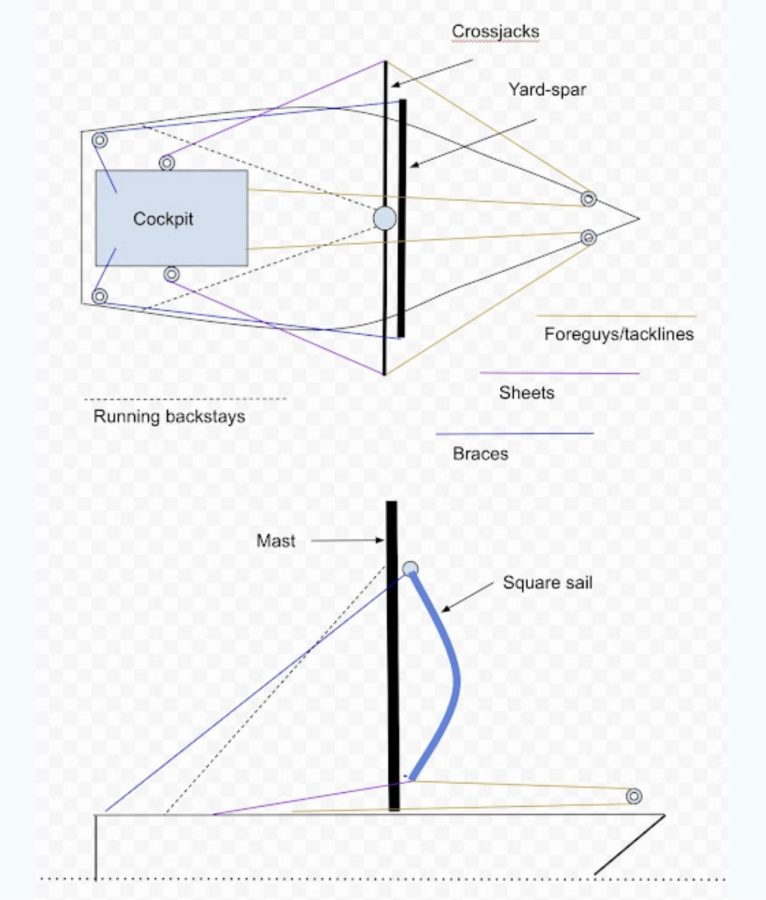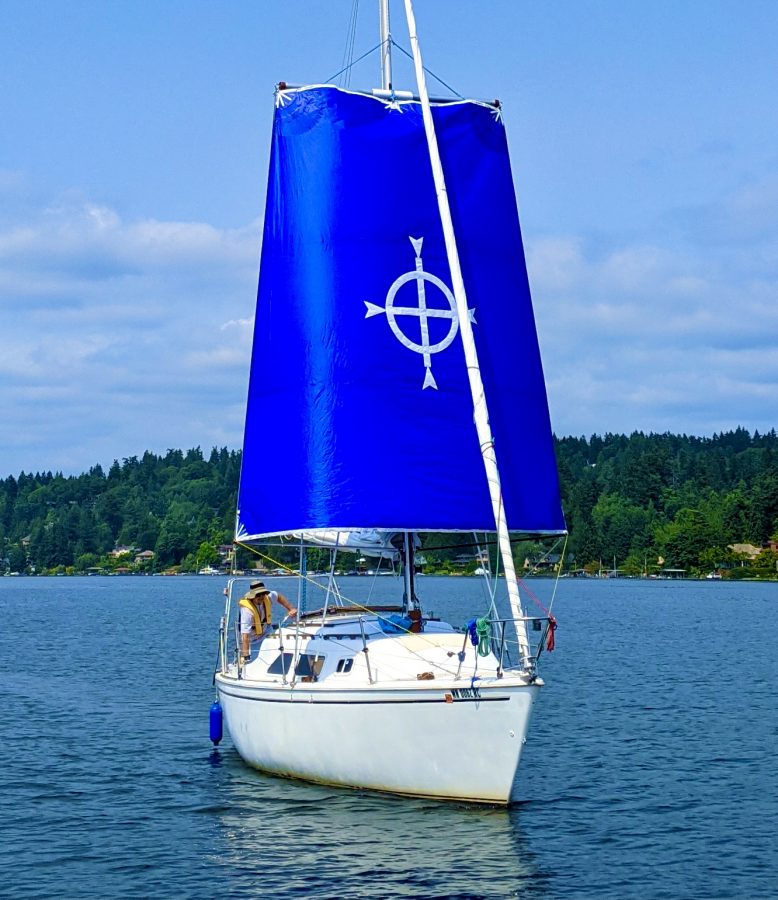
What Do You Call a Square-Rigged Sloop?
Jay Whitlan sails out of Parkshore Marina, Seattle, aboard his Laguna 26, named Sqoop. An unusual name, don’t you think? We do. But when we read Jay’s account of his project to turn a sloop into a square-rigged vessel, it began to make sense …
Ever since I got bitten by the sailing bug, I’ve been fascinated by square-rigged vessels. It started during a holiday visit to Lisbon’s Maritime Museum. I was dumbfounded by the profusion of sails and plethora of lines I saw on the detailed models of Portuguese brigs, carracks (“a three- or four-masted oceangoing sailing ship developed in the 14th to 15th centuries in Europe”) and galleons. As I started my sailing education, two events galvanized my interest in square riggers: I took a daysail (as a paying passenger) on the Lady Washington, and I discovered Patrick O’Brian’s novels about life in the British navy during the early 19th century. As a novice sailor whose nautical vocabulary was limited to the terms needed to sail a single-masted vessel with just a mainsail and foresail, I was captivated by the procedures used to maneuver a three-masted British warship with over 20 sails and innumerable control lines; how did the crew ever figure out which line to clap onto at the fife rail?!
When I first contemplated a foray into boat ownership, I originally intended to find an old, beaten-up (perhaps even dismasted) sloop I could convert into a hybrid cruiser that would motor upwind, and sail downwind with a single square sail. I eventually found a worn-out Laguna 26 that met my rather unique ‘must-have’ criteria, and I purchased her on the day of the original COVID lockdown order. This turned out to be a true blessing in disguise. The subsequent economic slowdown and my resultant leave of absence from work allowed me all the time in the world to plod along patiently, as a new boat owner, making needed repairs and figuring out the best way to rig her to fly a square sail. This required a lot of staring at the mast and mentally visualizing one unconventional configuration after another. I searched YouTube and lurked on the sailing forums but could not initially find anyone else crazy enough to attempt a similar conversion. As the refit began and the design evolved, I figured out it was possible to have a vessel that could hoist a square sail when running downwind, and still sail upwind as a fore-and-aft-rigged sloop.
Here is a synopsis of the rigging:

The head of the square sail is attached in three places to a yard (horizontal spar). The center of the yard is attached to a battcar, which slides along a T-track; this track is attached to the front of the mast and runs about two thirds of the way up the mast. The main halyard is reversed and attached to the yard. Braces are attached to each end of the yard (yardarms) and run back to the stern through blocks and cam cleats. The braces absorb the load of the sail’s head and also allow you to trim the top of the sail by rotating the yard to best capture the apparent wind. The sheets are attached to the sail’s clews (bottom corners) and transmit the sail’s foot loads to the winches, just as with any foresail. Two whisker poles (cross-jacks) and the associated foreguys help keep the sail inflated as the wind shifts and the boat rolls and pitches. I also attach two running backstays, when the wind gets above 10 knots, to counteract the large bending movement the sail could potentially impose on the mast.

I find the square sail to be effective over a wider range of downwind angles than a spinnaker or wing-on-wing configuration. I won’t claim the square sail is superior for running before the wind, but it certainly is unique!
If you’d like to learn a little more about Jay’s square sail, you can read about what he calls his “rather wacky journey” here.
